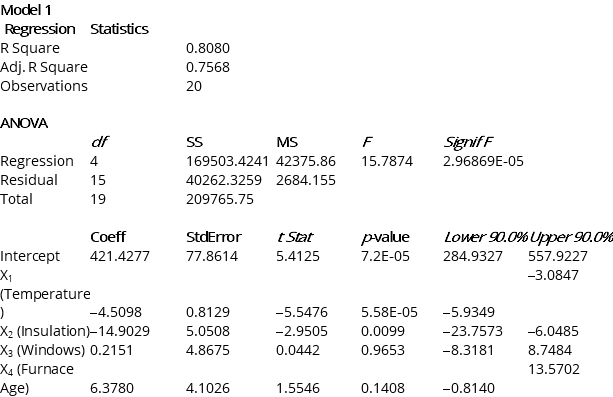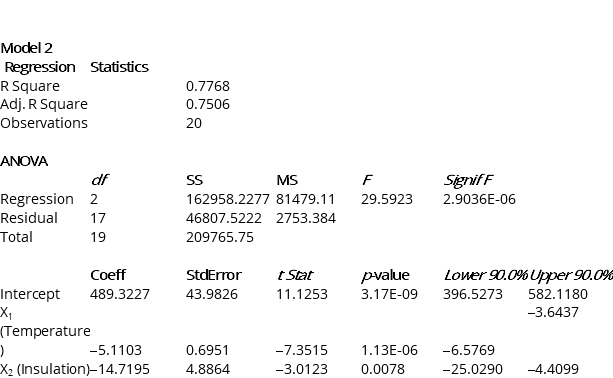Multiple Choice
Instruction 13.6
One of the most common questions of prospective house buyers pertains to the average cost of heating in dollars (Y) . To provide its customers with information on that matter, a large real estate firm used the following four variables to predict heating costs: the daily minimum outside temperature in degrees of Celsius (X1) , the amount of insulation in cm (X2) , the number of windows in the house (X3) and the age of the furnace in years (X4) . Given below are the Microsoft Excel outputs of two regression models.


-Referring to Instruction 13.6,the estimated value of the partial regression parameter β1 in Model 1 means that
A) holding the effect of the other independent variables constant, an estimated expected $1 increase in heating costs is associated with a decrease in the daily minimum outside temperature by 4.51 degrees.
B) holding the effect of the other independent variables constant, a 1% increase in the daily minimum outside temperature results in an estimated expected decrease in heating costs by 4.51%.
C) holding the effect of the other independent variables constant, a 1 degree increase in the daily minimum outside temperature results in a decrease in heating costs by $4.51.
D) holding the effect of the other independent variables constant, a 1 degree increase in the daily minimum outside temperature results in an estimated expected decrease in heating costs by $4.51.
Correct Answer:

Verified
Correct Answer:
Verified
Q194: Instruction 13.2<br>A lecturer in industrial relations
Q195: Instruction 13.19<br>You decide to predict petrol prices
Q196: Instruction 13.35<br>The education department's regional executive officer
Q197: In a multiple regression model,which of the
Q198: AU: Question 37 is the same
Q200: Instruction 13.22<br>The education department's regional executive officer
Q201: Instruction 13.23<br>The Head of the Accounting
Q202: Instruction 13.35<br>The education department's regional executive officer
Q203: AU: Question 37 is the same
Q241: When an explanatory variable is dropped from